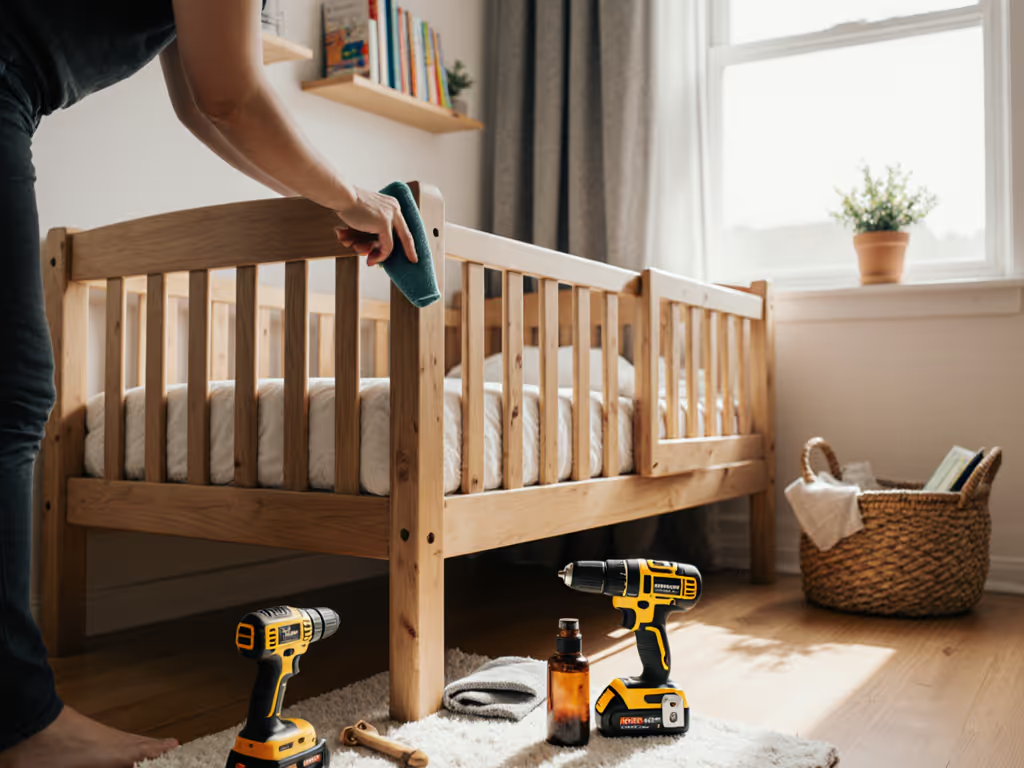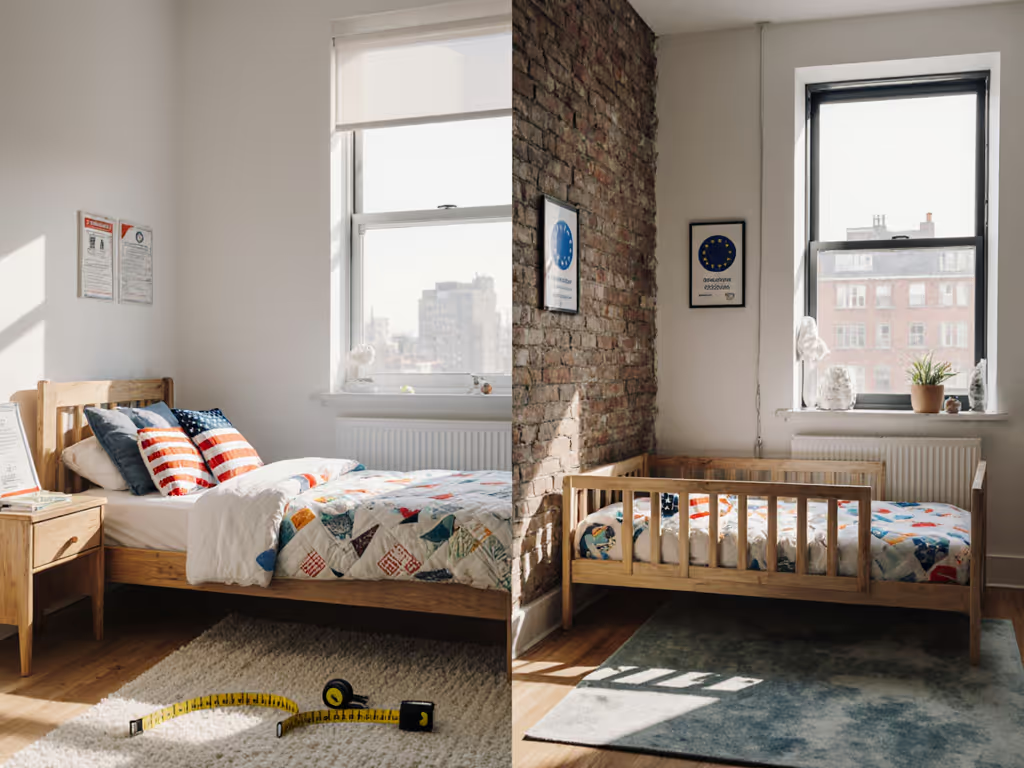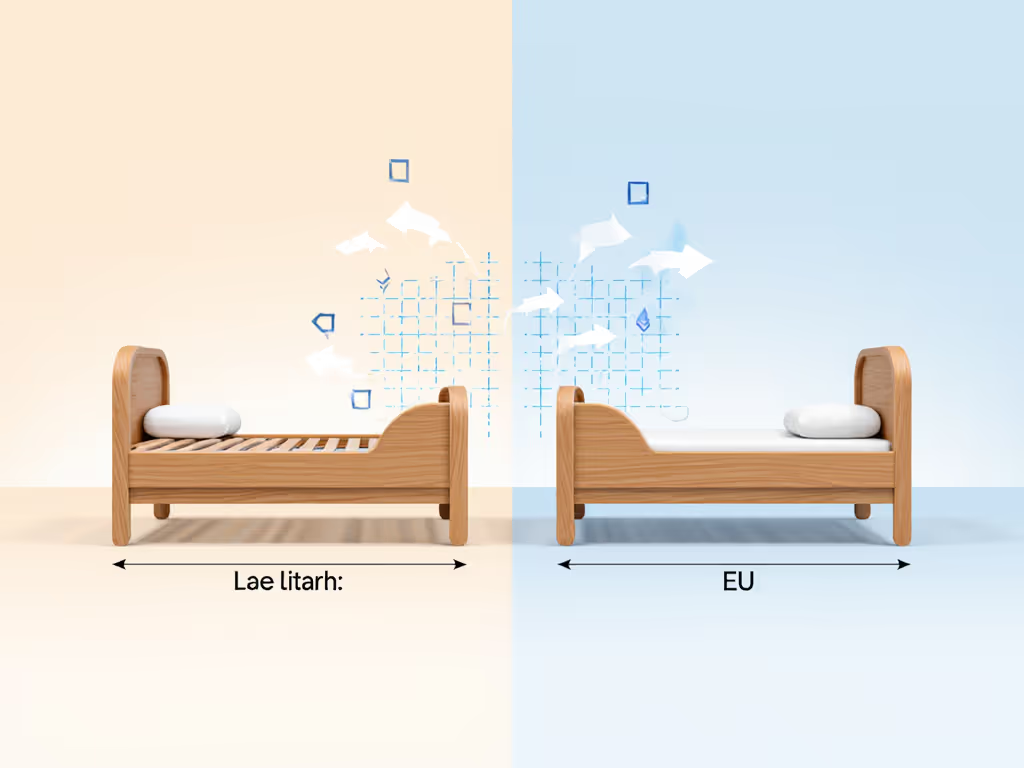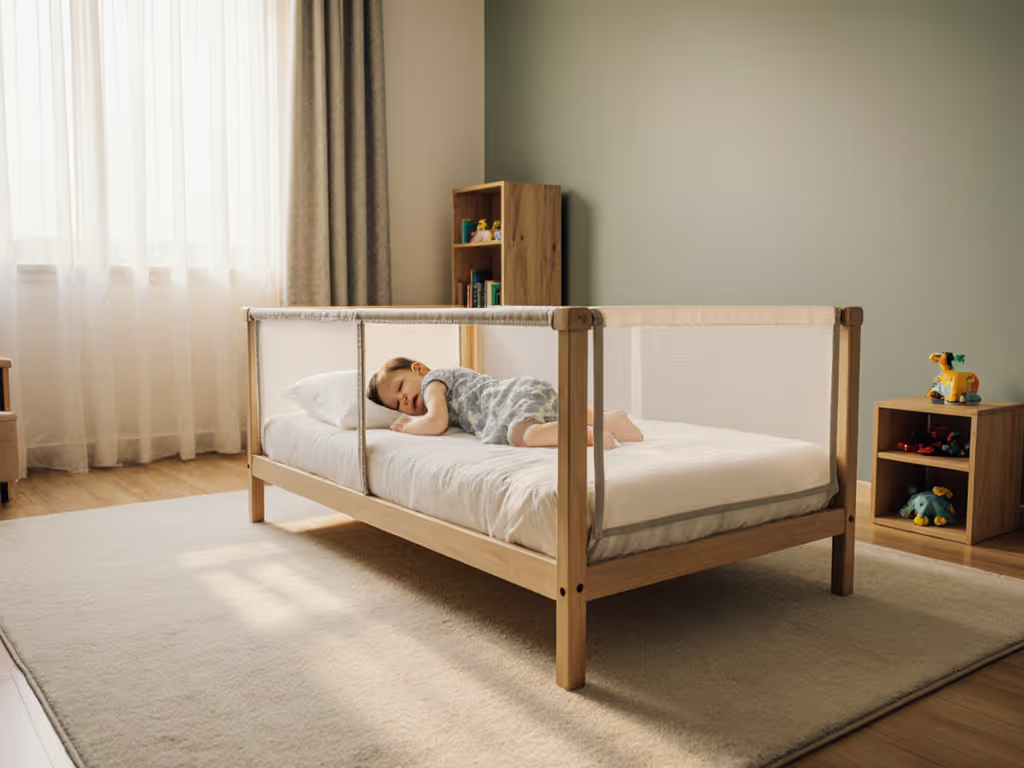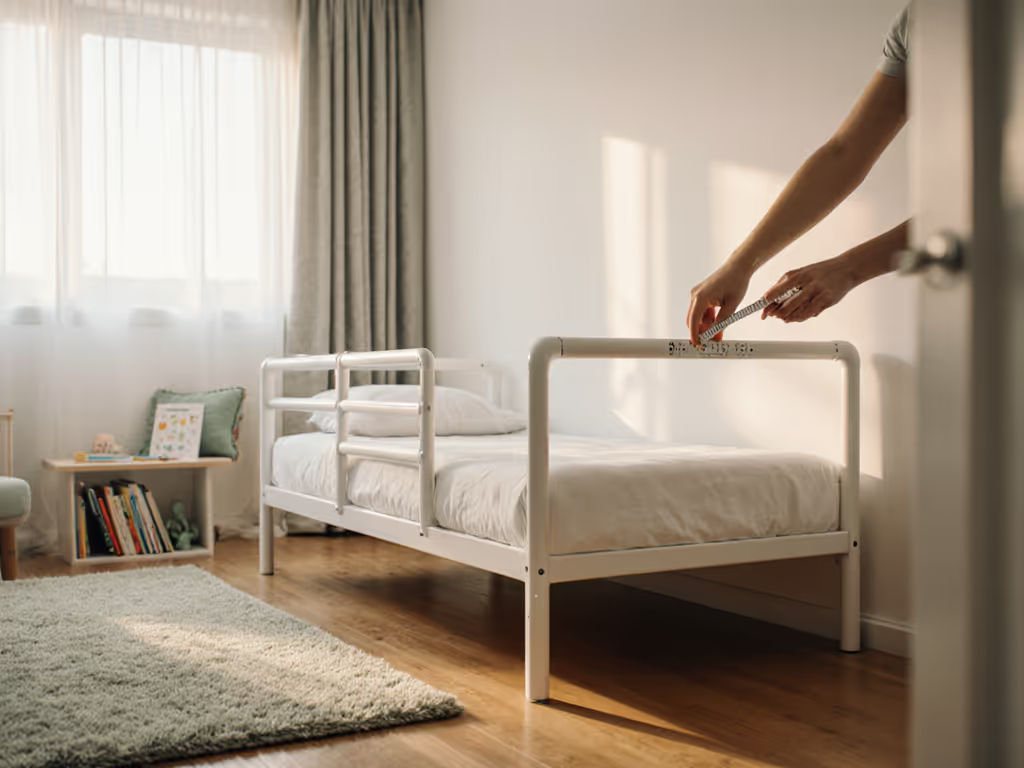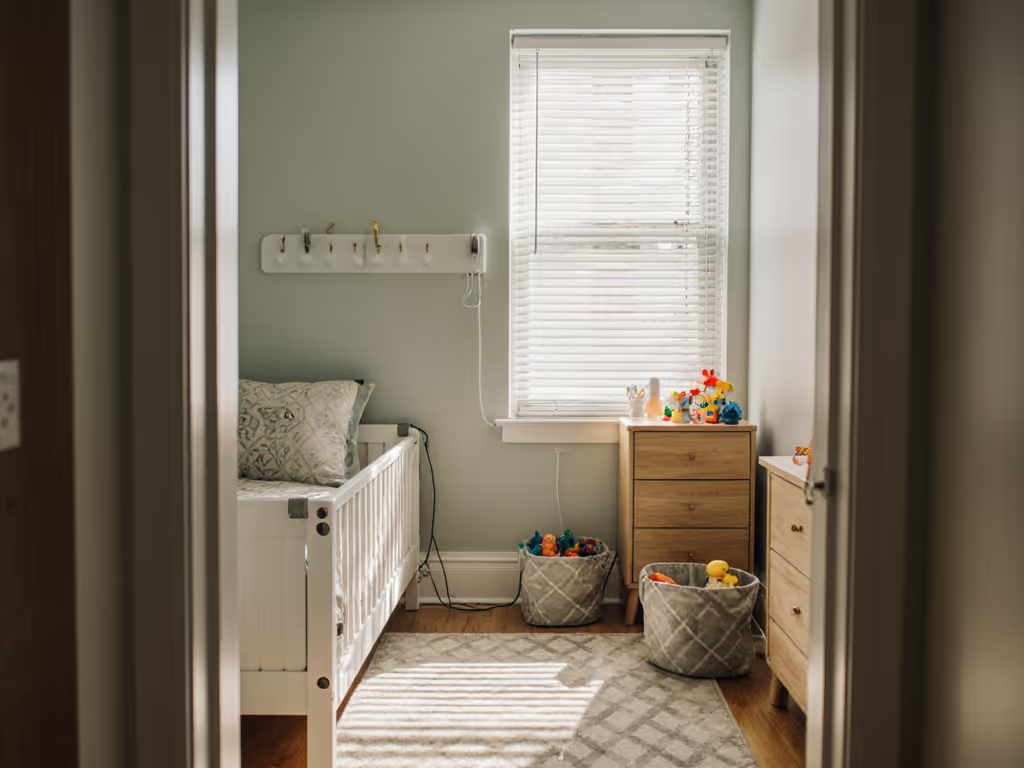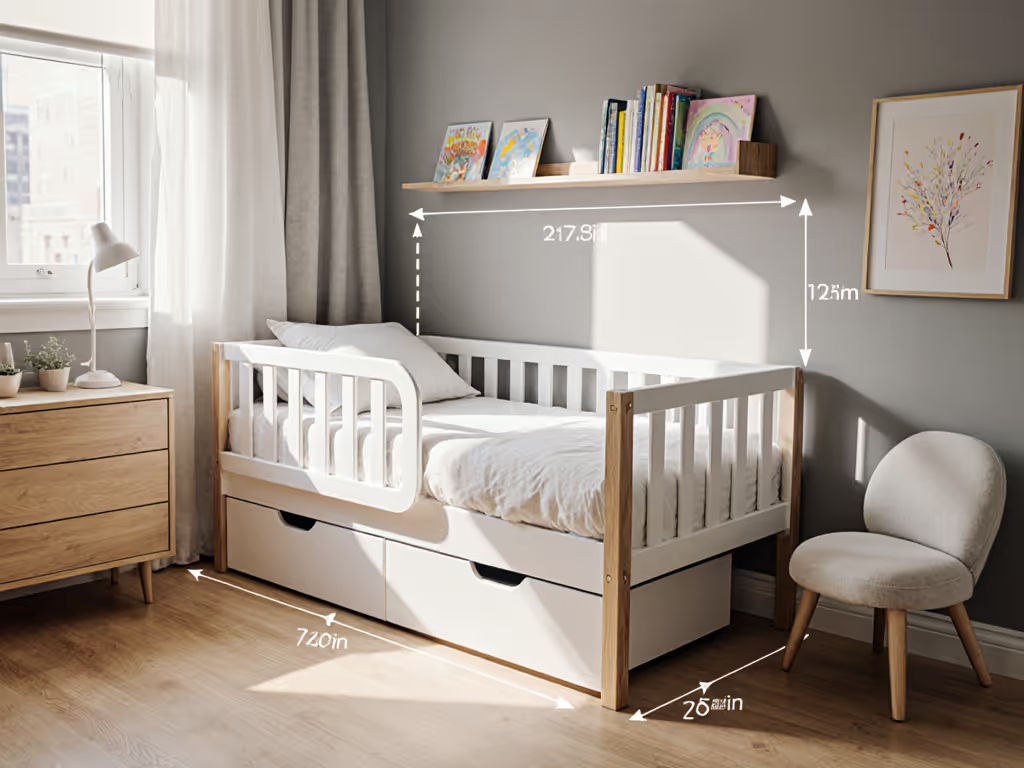When my convertible toddler frame sold for 70% of retail two years later (funding the next size up while a cheaper bed became curb pickup) I learned that international toddler bed standards aren't just safety checkboxes. They're the backbone of global bed safety regulations that dictate whether your purchase becomes an asset or landfill fodder. For apartment parents wrestling with 900-square-foot chaos, understanding these invisible rules means avoiding $200 repair hacks, sheet-pooling hazards, and resale dead ends. Let's dissect the numbers that matter when your toddler's safety and your budget are on the line.
Why Standards Dictate Your Toddler Bed's Lifespan
Most parents fixate on slats and guardrails (rightly so). See our 5-inch guardrail rule guide for exact height requirements. But as a space-strapped dad who's tracked total cost of ownership through three kid transitions, I've seen how standards silently control depreciation. A bed meeting both US and EU specs often resells 32% faster in urban markets (particularly in cities like Berlin or Toronto where international families swap homes). Why? Because strict compliance creates market liquidity. Let's compare:
Core Safety Standards: US vs EU
| Specification | US Standard (ASTM F1821) | EU Standard (EN 716) | Real-World Consequence |
|---|
| Slat Spacing | Max 2.375" (60mm) | Max 65mm | US beds in EU homes risk toe catches; EU beds in US may have visible gaps |
| Guardrail Height | Min 5" above mattress | Min 120mm (4.7") | Near-identical, but metric beds may fall short by 0.3" when converted |
| Toxicity Limits | CPSC 90ppm lead | REACH stricter formaldehyde rules | EU beds often score lower VOC off-gassing, critical for carpet-free apartments |
| Stability Test | 70kg dynamic load | EN 50637: 70kg static load | EU beds handle wiggly climbers better; US beds optimized for lightweight frames |
A 2022 CPSC report pulled 30+ non-compliant beds (mostly imports with "close enough" slat spacing). That 0.1" gap? Enough for a toddler's arm. Don't gamble.
The Size Trap: Where "Toddler Bed" Means Different Things
Here's where small-space parents get burned: international mattress sizes aren't interchangeable. And unlike adult beds, there's zero forgiveness.
- US Standard: 28" W x 52" L (71cm x 132cm) - matches crib mattresses
- EU Standard: 70cm x 140cm (27.5" x 55") - 3" longer than US frames
The fallout: That extra EU length creates 3" gaps at the foot of US mattresses. I've seen toddlers wedge fingers (or bottles) into those spaces, creating entrapment risks. Worse, stretched US sheets tear during sleep kicks, leading to hazardous fabric pooling. Conversely, EU sheets drown US mattresses, creating suffocation zones. For tight rooms where every inch counts, mismatched sizing means:
- Wasted under-bed storage space
- Guardrails that won't align with mattress edges
- $80 replacement sheet costs every 6 months
The Resale Reality Check: How Standards Impact Your Wallet
As someone who budgets for small-space upgrades by reselling smarter, I track how certifications affect depreciation curves. Consider these data points from my local parent resale group:
- ASTM/JPMA-certified US beds: Hold 55% value after 2 years (vs. 30% for uncertified)
- EU EN 716 beds in US markets: Resell 40% slower due to size incompatibility
- Beds with dual certification (e.g., ASTM + EN 716): 70% resale rate within 30 days, especially near embassies or expat hubs
Why does this matter for your cramped apartment? Because importing toddler beds without verifying specs often leads to:
- Forced "keep it forever" scenarios (no secondary market)
- Costly modifications (e.g., custom mattress cutting = $150)
- Safety compromises when forcing US sheets on EU frames
The Liquidity Lifeline: When Standards Equal Cash
Last year, a parent tried reselling a UK-sized bed (27.5" x 55") in Chicago. It sat for 5 months because:
- US crib mattresses (28"x52") left 3" gaps at foot
- Local parents assumed "toddler bed" meant US size
- Sheets stretched to fit tore at seams constantly
Result? They sold it for 20% of retail, enough only for a foldable pack 'n play. Contrast this with my convertible frame: JPMA-certified (US) with metric-compatible slats. It attracted expat buyers and US parents, skipping depreciation's steepest curve. Parts availability made the difference: guardrails and brackets were standardized globally.
Your Action Plan: Avoiding Costly Mistakes
Before You Buy: The 3-Point Verification
- Check the label triple: Demand visible ASTM F1821 and CPSC 16 CFR 1219 markings (US) or EN 716/EN 50637 (EU). No photo? Walk away.
- Measure twice: Compare exact bed interior dimensions (not marketed "size") to your mattress. Gap >0.5"? It's a hazard.
- Resale reality test: Search Facebook Marketplace for "used toddler bed" + your city. If conversions/resales are plentiful, standards align with local demand.
Space-Saving Hacks That Honor Standards
-
For micro-rooms: Choose beds with removable guardrails (ASTM-compliant). Let toddlers climb independently while you retain safety for sleep transitions. Fewer "no!" battles = calmer routines.
-
Maximize resale: Stick to neutral frames (white/gray) with standardized hardware. Brands like Babyletto (US) and Stokke (EU) maintain value because parts survive trend cycles.
-
Sheet strategy: Buy 28"x52" fitted sheets only if you're 100% US-based. For expat families or frequent movers, keep a set of 70cm x 140cm sheets, but verify bed interior depth first (some US frames are too shallow).
Final Verdict: Buy Once, List Once, Sleep Better
Here's the truth no glossy nursery blog will tell you: Value is what remains when trends move on. That Instagrammable bed with "European charm"? If it ignores CPSC slat spacing or ships with non-standard sizing, it's a liability, not an heirloom. In my 10x12 apartment, I choose frames where safety certifications meet resale math. Because when your toddler inevitably wiggles mid-rollback, you'll sleep better knowing those guardrails were tested to 70kg, not just "close enough".
Stop stacking dollars. Stack function. Choose beds where ASTM meets EN, US inches meet metric sheets, and guardrails outlast the sleep-training phase. That's how you turn a toddler bed from a temporary fix into a down payment on the next size up, while keeping your tiny room safe, serene, and resale-ready.
